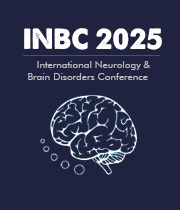Title : Therapeutic Efficacy of GPI-targeted deep brain stimulation in a filipino male with genetically confirmed X-linked dystonia parkinsonism: A case report
Abstract:
Introduction: X-linked Dystonia Parkinsonism (XDP) is rare neurodegenerative movement disorder endemic to Filipino males with maternal ancestry from Panay Island. It is caused by an SVA retrotransposon insertion in the TAF1/DYT3 locus on chromosome Xq13.1. XDP typically manifests with progressive dystonia, variably associated with parkinsonism, and displays limited responsiveness to dopaminergic therapy. Deep Brain Stimulation (DBS) targeting the globus pallidus internus (GPi) has emerged as a promising therapeutic modality in medically refractory cases.
Case Description: A 32-year-old right-handed Filipino male presented with a two-year history of progressive dystonia involving the neck, upper extremities, and oromandibular region. Neurological examination revealed severe cervical dystonia with torticollis, bilateral upper limb rigidity with posturing, and jaw-clenching. Cranial MRI showed mild bilateral caudate head atrophy. Genetic testing confirmed an SVA retrotransposon insertion in the TAF1/DYT3 locus, establishing the diagnosis of XDP. A Levodopa Challenge Test demonstrated poor dopaminergic responsiveness (Unified Parkinson’s Disease Rating Scale Part III: baseline 53; 30 minutes, 55 [–3.77%]; 60 minutes, 54 [–1.88%]). Preoperative Burke- Fahn-Marsden Dystonia Rating Scale (BFMDRS) score was 39, with predominant involvement of the cervical and upper limb regions.
Discussion: The patient underwent bilateral GPi-DBS implantation. At 3-month follow-up, the BFMDRS score decreased to 8, representing a 79.5% reduction in dystonia severity. Significant improvements were observed in functional domains including gait, speech, and upper limb mobility. The absence of surgical complications and robust symptomatic response supports the safety and efficacy of GPi-DBS in XDP.
Conclusion: This case illustrates the clinical utility of GPi-DBS in genetically confirmed XDP with minimal levodopa responsiveness. The marked motor improvement and reduction in BFMDRS score reinforce its role as a viable neurosurgical intervention in severe, pharmacoresistant cases of XDP.



